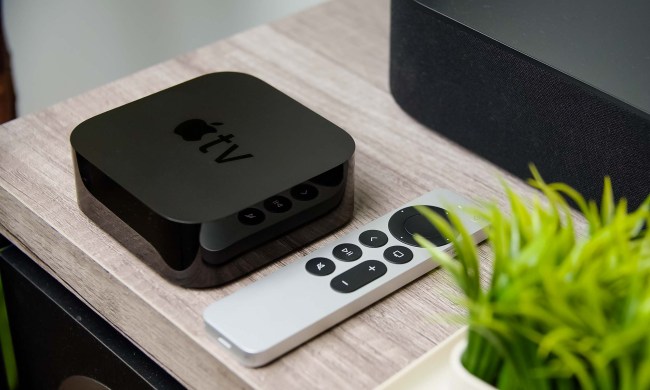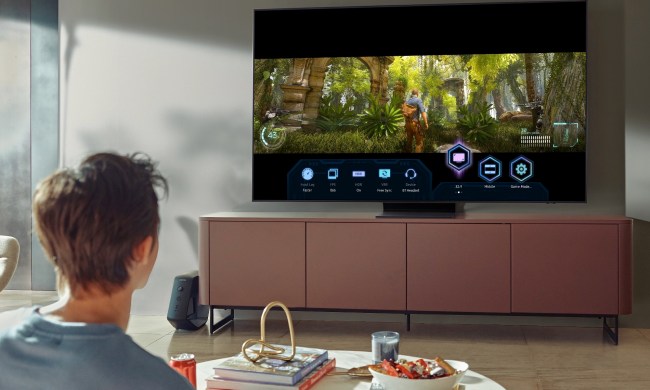- Very good black levels
- High brightness
- Impressive contrast
- Solid HDR performance
- No HDMI 2.1 feature support
- Needs moderate color correction
I continue to be shocked by how great TVs under $1,000 can be these days. Time was, if you wanted premium picture quality from a 55- or 65-inch TV, you were going to spend at least $1,500 to $3,000.
The Hisense H8G Quantum is part of a new breed of televisions coming from China that blow competing brands’ pricing models out of the water. At $700, the 65-inch H8G Quantum looks like an almost ridiculously good value. But what about that picture quality?
To be honest, I’ve felt tepid about the past few Hisense TVs I’ve reviewed. Most recently, the Hisense H8F worked well in bright rooms but lacked the deep black levels and vivid color I got from the TCL 6-series for the same price. Its operating system was also lethargic and frustrating to deal with.
Going into this H8G Quantum review, I was hopeful the addition of quantum dots, a more advanced backlighting system, and Android TV might take the H8G Quantum from good to great. Spoiler alert: I have not been disappointed.
Hisense H8G Quantum 4K HDR TV Details
While we reviewed the 65-inch H8G model, our review also applies to the 55-inch, 75-inch and 85-inch models.
| Screen Size | Model Number | MSRP |
| 50-inch | 50H8G | $400 |
| 55-inch | 55H8G | $600 |
| 65-inch | 65H8G | $800 |
| 75-inch | 75H8G | $1500 |
Out of the box

I am pleasantly surprised at the H8G Quantum’s aesthetic. It has remarkably trim bezels and a reasonably thin profile.
Like most TVs today, the TV’s stand is comprised of two blade-style feet. Unlike many TVs that provide one set of feet locations situated at the far ends of the TV, the H8G Quantum has a narrow placement option as well. If you go with the narrower set, the footprint is about 36 inches wide and 9.7 inches front to back. The wider stance, which provides more stability and, frankly looks better, is just shy of 44 inches wide.
I am pleasantly surprised at the H8G Quantum’s aesthetic.
You’ll find limited options for cable management, with a simple cable clip affixed to the back of each stand foot.
The included remote control is an old-school wand-style model that has more buttons than you’ll probably need. I’d love to see an update to a more modern remote, but for $700 I’ll refrain from complaining.
Features

The H8G Quantum offers four HDMI 2.0 inputs, with one supporting ARC, but there’s no eARC support. There’s also no support for variable refresh rate (VRR) or Auto Low Latency Mode (ALLM), both of which are features that gamers should be on the lookout with next-gen consoles coming later this year.
If you’ve got older video components, there is a composite video input next to a pair of analog audio inputs, with all three RCA connections built into the back of the TV. There is no need for a breakout cable, and no support for component video connections, though the need for those is rapidly dying.
Under the hood, the H8G Quantum has a VA-type LCD panel with a full-array local dimming (FALD) backlight system. The combination of these two should help the TV achieve deeper black levels and minimize halo effect, which produces rings of light around bright objects on a dark background.
The use of the VA panel also means that off-angle viewing will not look very good. Colors wash out, the contrast takes a big hit, and you can more easily see the backlights in action — all very typical.

Hisense has attempted to tackle these common problems with some sort of enhanced viewing angle feature, but I’ll just tell you now that I don’t think it works particularly well. With that said, the H8G Quantum performs exactly the same as other TVs that don’t have fancy extra layers to try to improve off-axis viewing.
The addition of quantum dots should mean that the H8G Quantum will not only offer a much wider color gamut but also provide a richer HDR experience. Speaking of, the H8G Quantum supports HDR10, Dolby Vision and HLG HDR formats. Hisense also claims the TV supports HDR10+, but I was never able to get it to work on Amazon Prime Video, which is my only source for that particular format. I don’t consider this a fault of the TV so much as a curious bug.
Finally, as mentioned earlier, the H8G Quantum runs Android TV and runs it surprisingly well. Android TV has been notoriously difficult to run in the past, but I experienced no significant lag or lethargy.
Performance

Full disclosure: The first H8G Quantum review sample Hisense sent me was defective. I’m not sure whether the issue was with the picture processor, the panel, or both, but it didn’t look right to me. I chronicled my experience with that TV in this video and requested a replacement, which was sent immediately. The defective unit was sent back to Hisense for analysis and I will update this review when and if Hisense gets back to me regarding what exactly was wrong.
Hisense assures me the issues I experienced are not common, and I can confirm that there are no widespread reports of problems.
I am very impressed with the H8G Quantum’s picture quality.
Within seconds of turning on the replacement sample, I could tell I had a properly operating television. As I dug deeper, however, I began to suspect that the TV I had received operated perhaps a little too well in some regards. More on this in a moment.
Generally speaking, I am very impressed with the H8G Quantum’s picture quality. Sitting directly in front of the TV, I was surprised at how well the backlight system controlled the dark areas around bright objects, especially in HDR modes. A popular real-world test for this is watching a dark movie with letterbox bars on the top and bottom of the image while engaging closed captions. The white text at the bottom of the screen will often turn the surrounding black bars a medium-dark gray, and while I did witness some of that effect, it was impressively minimized.

The H8G Quantum I received is also capable of impressive brightness. This is where I began to suspect the TV I had received may be performing better than what is expected for this model. By Hisense’s own claims, this TV should put out a maximum of 700 nits of peak brightness.
I measured the model I received using a SpectraCal C6 HDR colorimeter and Portrait Displays’ Calman 2020 color calibration software and got a peak brightness reading of around 920 nits — significantly higher than Hisense’s own claims and higher than the figure other reviewers have measured.
It has been put forth by commenters on YouTube that I may have received some sort of “juiced up” or “optimized” TV from Hisense, but I do not believe that to be the case. Not only has Hisense assured me that I received a standard sample, but I perform a factory reset on all the TVs I review before I evaluate them, ostensibly erasing any alterations made prior to the TV being shipped to me. In short, I guess I got lucky.
It was clear that the color was a little off.
The sentiment of hitting the jackpot with this TV continues in that the sample I received has pristine screen uniformity. Using a fullscreen gray color pattern, I observed no vignetting or other dark blotches on the screen. This TV has an extremely clean panel.
Not everything was super, however. Without taking any measurements, it was clear that the color was a little off. Not poor, just not accurate. Yellows seemed especially intense, and I sensed orange colors were also a little overboard. After taking more measurements, I determined that the blue pixels in the TV were too pronounced. I made a small adjustment, and everything locked into place.

Out of the box, in the Theater Day and Theater Night modes, the H8G Quantum performs extremely well. Color could use some work, and if you are the sort of person who values accurate color, consider taking some of the money you save buying this TV and pay a professional calibrator to make some adjustments.
Otherwise, I think people are going to be thrilled with this TV’s picture quality. The blacks are deep, the colors vibrant, and HDR material is extremely enjoyable to watch. The TV looks vivid in a room filled with daylight and looks even better in a dark room for movie night.
As far as processing goes, I feel Hisense is making some strides. When watching low-bit rate content from Netflix and Hulu, the H8G Quantum wasn’t able to clean up the image as well as the Sony X900H. That’s hardly a fair comparison, but the fact that the H8G is even in the ballpark with a TV that costs twice as much is really saying something.
Our take
The Hisense H8G is an impressive TV, especially for the price. With sizes ranging from 50 TO 75 inches and prices ranging from $380 to $1300, the H8G Quantum line has a model that should suit the needs of a wide range of TV shoppers, particularly those who want premium picture quality in a budget-friendly set.
Is there a better alternative?
At $700, I struggle to make any comparisons until Vizio and TCL’s TV lineups arrive. I can say that the H8G punches well above its price class, and I suspect IT will outperform similarly priced models from competitors, such as the TU8000 from Samsung and the UN7300 from LG.
How long will it last?
I have not had enough long-term experience with Hisense TVs to make a qualified judgment on how long this TV will last. I will say, though, that Hisense’s developing track record with TVs in the U.S. appears to be going in a positive direction.
Warranty
Hisense offers a one-year parts-and-labor warranty on the Hisense H8G Quantum. The warranty is full of stipulations, so be sure to read through it thoroughly here.
Should you buy it?
Yes. Most folks will be thrilled with this TV’s picture quality for the price. While I would not recommend it for enthusiastic gamers excited by the arrival of next-gen consoles, it is a highly practical purchase for most users.





